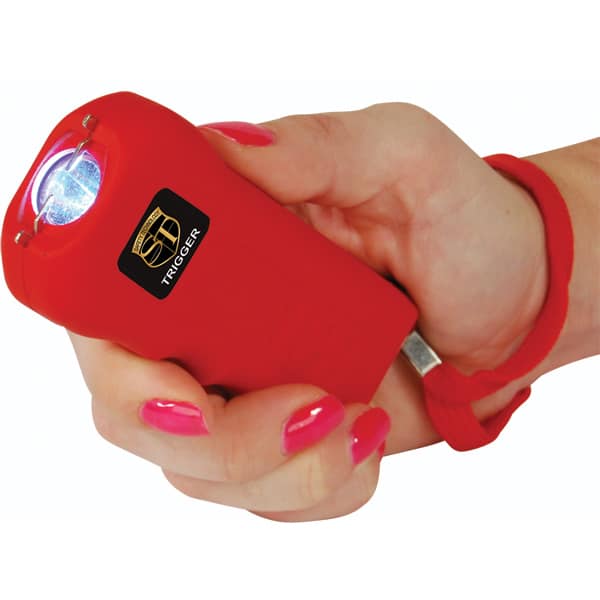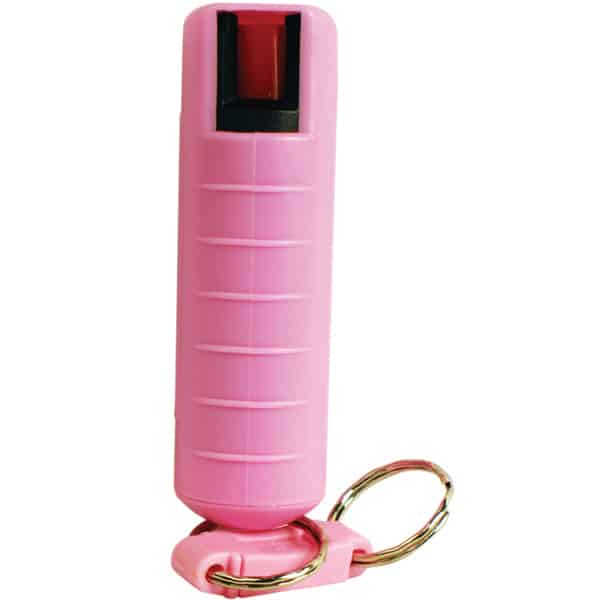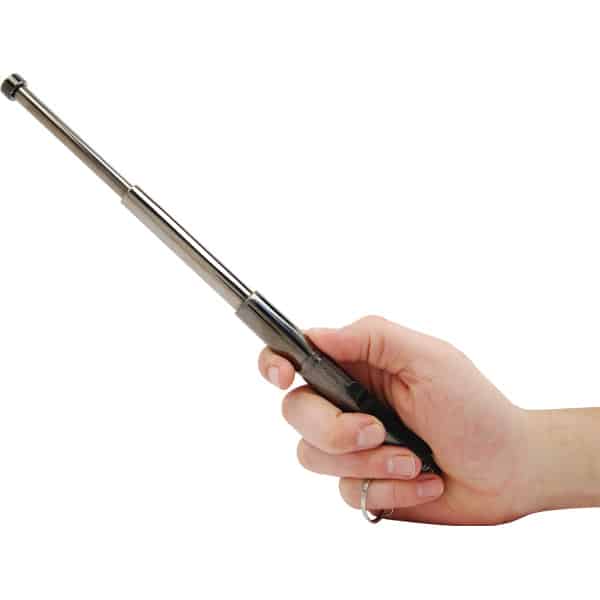
As you become more self-confident and secure, master basic self-defense techniques. Learn how to use self-defense tools effectively to build muscle memory and improve your skills.
Enhance your situational awareness and sharpen your instincts. Each step you take will boost your confidence, reduce anxiety, and nurture a resilient mindset. These skills also improve your emotional well-being, preparing you mentally to tackle life’s challenges.
You’ll discover more strategies to maintain your safety and mental strength as you progress. Stay committed to your journey of self-improvement and empowerment.
Have you ever wondered why you feel scared sometimes? Personal fear often comes from past traumas, experiences, or perceived threats. When you get startled by a sudden noise or find it hard to speak up in a crowd, your brain’s amygdala is at work, preparing you to fight, flee, or freeze. This small but important part of your brain plays a big role in responding to fear, often reacting before you even have time to think.
Understanding your fears means being aware of what triggers them. It could be a specific situation, a certain type of person, or even a particular place that makes your internal alarm go off. Once you figure out these triggers, you start to see why your body reacts the way it does—like your heart racing, palms getting sweaty, or feeling the urge to run. Recognizing these signs is the first step towards feeling more empowered.
Knowing your triggers is not enough; understanding how you react to them is also crucial. Do you face your fear head-on, avoid it, or feel frozen in place? Each reaction stems from your personal history and experiences. By pinpointing and accepting these patterns, you’re on the path to gaining a deeper understanding of yourself, which is crucial in regaining your sense of safety and control.
To defend yourself effectively, you must master using self-defense tools like stun guns, pepper sprays, or expandable batons. These skills are essential for protecting yourself in dangerous situations. Regular practice is key to developing muscle memory so your body knows what to do, even under stress.
Along with physical techniques, sharpening your situational awareness is crucial. Always be alert to your surroundings and identify potential threats before they escalate. This awareness helps you avoid dangerous situations whenever possible.
Additionally, it is important to learn verbal de-escalation tactics. Often, the right words and assertive behavior can prevent a physical confrontation. It’s about effectively asserting your boundaries, not aggressively.

When you train in self-defense, you get ready physically and gain powerful psychological benefits that boost your mental health and emotional strength. As you learn and practice these techniques, you’ll see a big change in how you deal with stress and unexpected challenges.
These psychological changes are profound. You’re not just learning to protect yourself but also building a toolbox for mental and emotional well-being. This newfound strength isn’t limited to potentially dangerous situations; it impacts all aspects of your life, enabling you to stand taller and confront the world bravely. This is the true strength of self-defense—it transforms you, inside and out.
Explore the Physical Techniques Masterclass, where you’ll acquire crucial self-defense skills, such as properly using a stun gun, pepper spray, or even an expandable baton.

Knowing how it works and its safety features is important when using a stun gun. Before using it, ensure the device is fully charged and the electrodes are clean and in good condition. Aim for the largest muscle areas on the body for the best results, like the abdomen, thigh, or back. Avoid targeting sensitive areas such as the face, throat, or groin.
Remember, a stun gun is a tool for self-defense and should only be used when you feel threatened or in danger. After using the stun gun, find safety and contact law enforcement if needed. Proper training and understanding of your stun gun are crucial for using it effectively and responsibly.

Pepper spray is essential for self-defense, but it is vital to know how to use it effectively. Start by reading the instructions and practicing accessing and deploying it quickly. Always keep the pepper spray in a place where you can easily reach it, and be ready to use it if needed.
When facing a threat, aim the spray at the attacker’s face and eyes. This will cause temporary blindness and extreme discomfort, giving you a chance to escape. Remember to maintain a safe distance and consider the direction of the wind to avoid the spray blowing back toward you.
After using pepper spray, seek help immediately and report the incident to the authorities. It’s crucial to use pepper spray when you feel physically threatened and never as a form of aggression.

Before you deploy an expandable baton, assess the situation to decide if it is necessary and appropriate to use it. When you extend the baton, do so in a controlled manner and aim for the lower body’s large muscle groups to reduce the risk of causing serious injury.
Use the baton with precision and restraint, targeting areas like the thighs, shins, or arms to disable an attacker without using excessive force. After you use the baton, make sure to seek medical attention for the individual if needed and report the incident to the appropriate authorities.
Remember to regularly practice and maintain your skills with the baton to ensure you can use it effectively and safely when the situation demands it.

Remember always to stay alert to your surroundings and trust your instincts when something feels off. Your gut feelings are a powerful tool in keeping yourself safe. When you’re out and about, make sure to keep your head up and be aware of who and what is around you. This helps you avoid potential threats and shows you are confident and less likely to be targeted.
Here are a few practical tips to enhance your safety awareness:
You will feel more confident and less anxious as you learn different self-defense and psychological techniques. This feeling of empowerment is crucial, especially in tough situations where you need to remain calm and focused. Remember, it’s not only about being physically strong—your mental attitude also plays a big part in your overall defense strategy.
Below is a table that highlights the core benefits of regular self-defense practice:
| Benefit | Description |
|---|---|
| Enhanced Reflexes | Faster and more accurate responses in dangerous situations. |
| Mental Resilience | Increased ability to manage fear and act under pressure. |
| Proactive Mindset | Improved risk assessment and preemptive safety measures. |
In your self-defense journey, overcoming obstacles involves developing physical strength and mental fortitude. As you move forward, you’ll realize that the hurdles you encounter are physical and mental. It’s all about persevering even when things get difficult, improving your abilities, and keeping a strong mindset.
Facing and conquering your fears isn’t just a one-time event but a continuous process. Here are a few key strategies to help you navigate through these challenges:
To stay mentally strong in self-defense, you must remain calm under pressure, think fast, and adjust quickly to new situations. Developing this resilience isn’t just about physical skills; it’s about strengthening your mind. Using the right mental tools allows you to deal with challenges more effectively and confidently in confrontations.
Here are a few strategies to help you enhance your mental toughness:
Mental strength is dealing with challenges, stress, and adversity effectively. It involves resilience, determination, and staying focused and positive in difficult situations.
Building mental strength is a gradual process that involves developing healthy habits and strategies. This can include practicing self-care, setting realistic goals, staying positive, seeking support from others, and learning to manage stress effectively.
Knowing how to use self-defense tools effectively can help you protect yourself in dangerous situations. It can also give you the confidence to handle potential threats and increase your chances of staying safe.
Pepper Spray Wholesale provides non-lethal self defense products and hidden cameras for you, your loved ones and your home. If you have any questions about the products, do not hesitate to Contact Us. Stay Safe!
Pepper Spray Wholesale
1867 Caravan Trail
Ste 105
Jacksonville, FL 32216
Call us toll free: (800) 859-5566